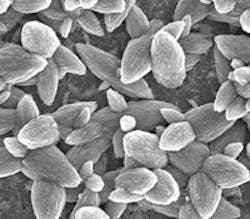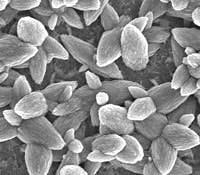Nanocoating Boosts Heat Transfer
Researchers at Oregon State University, Corvallis, Ore., and U.S. Department of Energy's Pacific Northwest National Laboratory (PNNL), Richland, Wash., have discovered that depositing a nanocoating of zinc oxide on aluminum gives a heat transfer coefficient ten times higher than that of the bare metal alone. The technique suits other metals, and both the coating material and deposition process are inexpensive, they say.
"For the configurations we investigated, this approach achieves heat transfer approaching theoretical maximums," says Terry Hendricks, project leader at PNNL. "This combination of a nanostructure on top of a microstructure has the potential for heat transfer that's much more efficient than anything we've had before," adds Chih-hung Chang, associate professor in the School of Chemical, Biological and Environmental Engineering at Oregon State.
The key is use of a solution-based microreactor-assisted nanoparticle deposition (MAND) technique in which a microchemical system controls and delivers reacting chemical solution. This gives a coating with nanocrevices and surface irregularities that initiate nucleation, a somewhat porous surface structure that allows fluid inflow to keep nucleation sites active, and surface protrusions that create a more-active boiling area (Figure 1). The coating has good adhesion and a typical thickness of around hundreds of nanometers, says Chang.
"One of the main advantages of the MAND technique is its ability for scale up," he notes. It can successfully treat contoured components such as chevron-embossed sheets and is amenable to coating commercial-size hardware such as plates and tubes, Chang adds.
The researchers plan to optimize the micro- and nanostructures to further improve heat transfer and to develop scale-up processes. "The hope is to start Spring 2011. We should know more within a year," Chang says. Companies already have expressed interest in cooperating on the development of the technology.
The approach is at least a couple of years away from commercial use, notes Chang. First applications are apt to be in power electronics or heating/ventilation/air conditioning, he believes.

